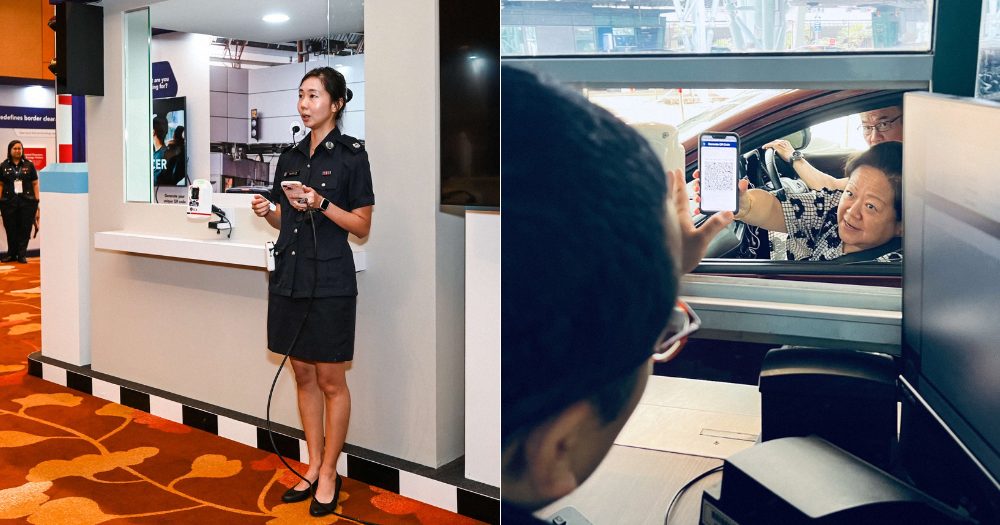Going to Malaysia for a quick getaway has become something of a national pastime.
Between the Jun. 13 and 17 Hari Raya Haji long weekend, the Immigration & Checkpoints Authority (ICA) saw a record number of crossings at the land checkpoints — more than half a million people on Jun. 14 alone and over 2.4 million people in total.
Managing the surging travel demand and trying to make the immigration clearance process secure and efficient in the face of decreasing manpower requires constant innovation by the ICA.
This is where ICA’s Future Operations and Transformation (FOT) team comes in.
The team is responsible for leveraging technology to make immigration clearance more convenient and efficient without sacrificing security.
Valerie Lin, 33, is a manager with the FOT team, and their most recent brainchild is the QR code initiative rolled out on Mar. 19.
According to Lin, the overall waiting time can be reduced by more than 30 per cent if most car travellers use QR code for clearance.
Bumps along the road
With the QR code initiative, car travellers only need to download the MyICA mobile application, populate their passport details in the application to generate a unique QR code, and scan the QR code at the checkpoint for verification.
Those travelling in the same car can populate their passport details and generate one group QR code for immigration clearance.
QR code was chosen as it is a piece of technology that is already prevalent, especially with digital payments and with the implementation of SafeEntry during the pandemic.
Although the system is simple by design, putting it together was anything but easy.
Building the QR code system required close collaboration across agencies, departments, managers, sub-teams, and vendors.
To balance user-friendliness with operational and data security requirements, Lin and her team interviewed both internal and external stakeholders and conducted weekly discussions and design-study workshops.
The team also exchanged experiences and ideas after using different mobile applications.
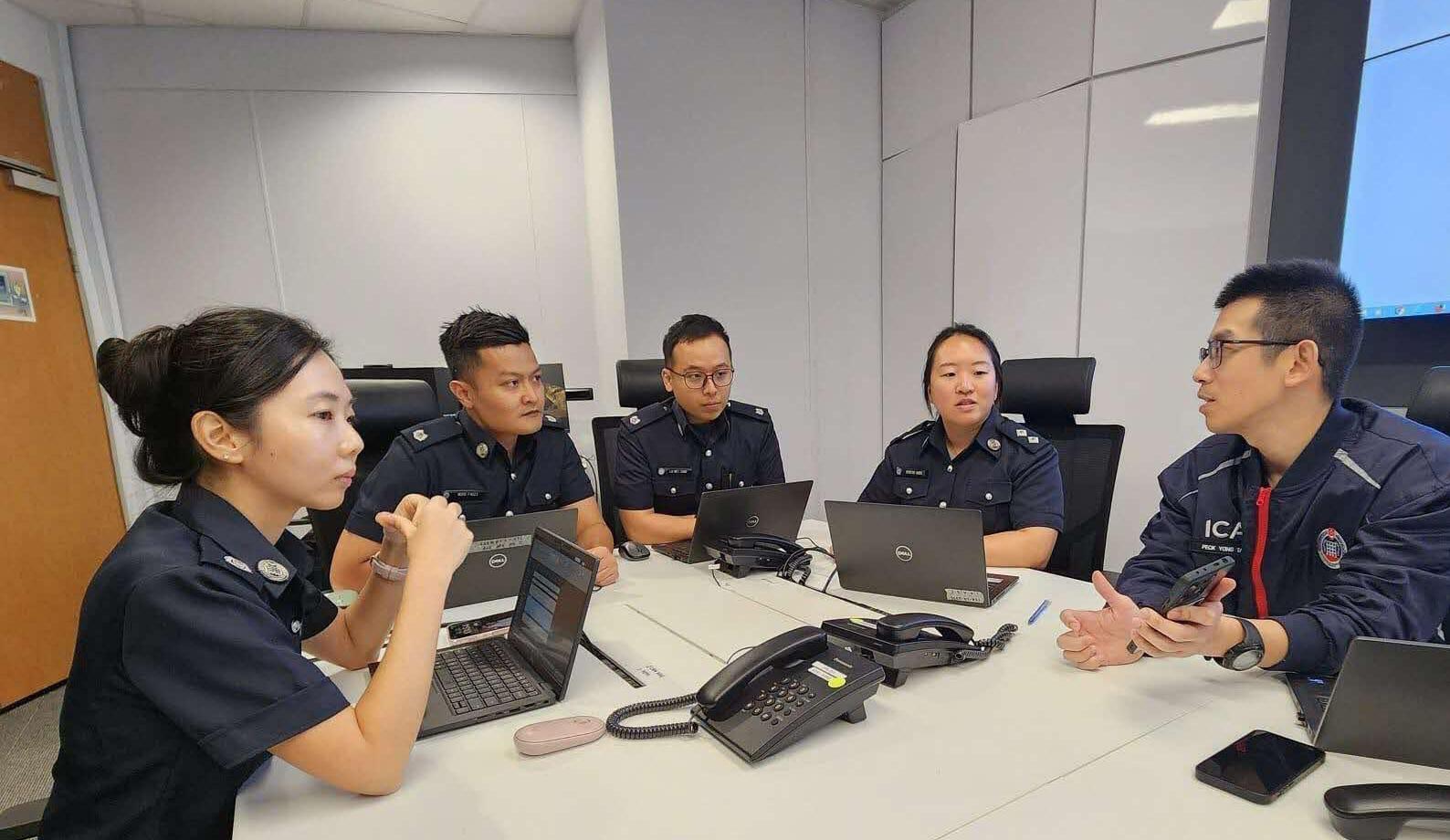 Lin and her team in discussion. Photo courtesy of ICA.
Lin and her team in discussion. Photo courtesy of ICA.
According to Lin, during the system testing phase, the team encountered several bumps and hiccups along the way where the system did not perform as designed and intended.
Despite the setbacks, Lin and her team worked closely with the relevant stakeholders to troubleshoot the issues and resolve them.
“We had spent the weeks prior to the implementation performing rigorous stress tests on the mobile app and system, spending longer hours at the checkpoints,” the manager recalled.
Even with all the preparation, Lin revealed that in the days leading up to the Mar. 19 rollout, the team was “tired, nervous, and excited, all at once”.
“The success of our initiative is really a culmination of our hard work and collaborative efforts with our colleagues, partners, and vendors, all in three months of rigorous trials and testing”, Lin recognised.
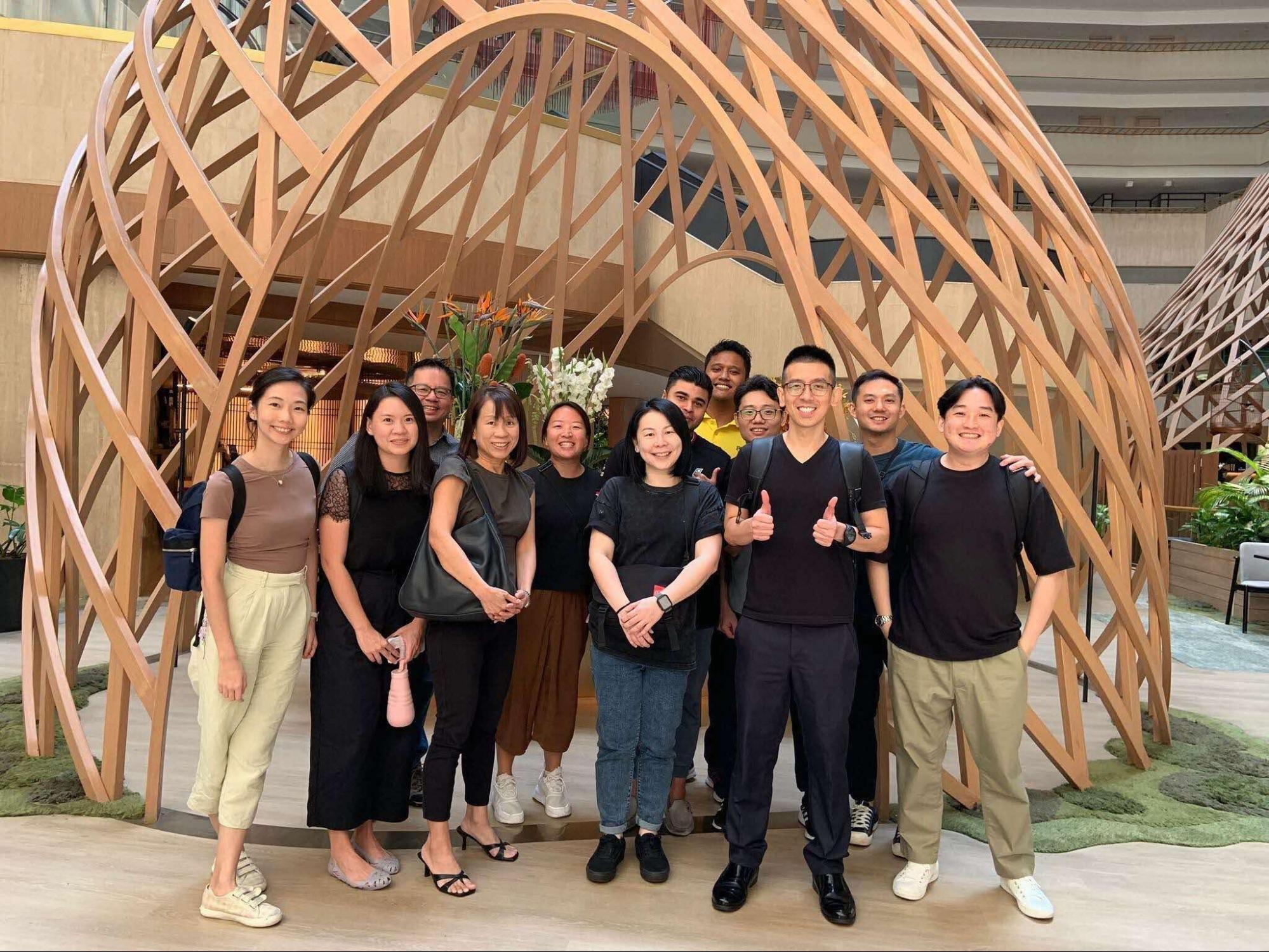 Lin and her colleagues from the FOT Cargo and Conveyance, Operations Division out for a team lunch. Photo courtesy of Valerie Lin.
Lin and her colleagues from the FOT Cargo and Conveyance, Operations Division out for a team lunch. Photo courtesy of Valerie Lin.
A step towards fully automated clearance for cars
But Lin’s work in the FOT team doesn’t just stop here.
Lin shared that the QR code initiative is meant to pave the way for the full implementation of the Automated Passenger Clearance System (APCS).
Similar to a self-checkout in supermarkets, with the APCS, car travellers will self-scan the QR code generated from their MyICA mobile application and present their biometrics for verification via contactless biometric scanners.
Launching the QR code first was an intentional step and is meant to help car travellers “familiarise” themselves with the use of QR code as the primary means of clearance, Lin explained.
More than 5.6 million out of 8.5 million car travellers have used QR code for immigration clearance when passing through Singapore’s land checkpoints from Mar. 28 to May 31, 2024. This is more than 66 per cent of the total car travellers using the checkpoints during the same period.
The APCS is set to be implemented at Tuas from 2026 onwards and the redeveloped Woodlands Checkpoint from 2028 onwards.
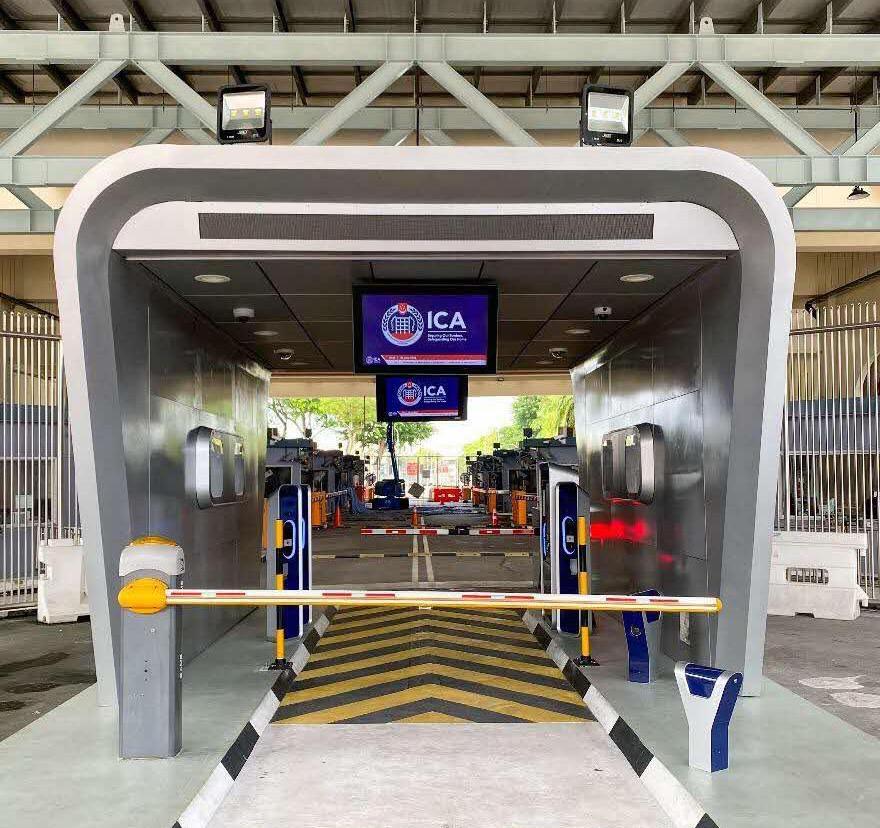 APCS Trial at Old Woodlands Checkpoint. Photo courtesy of ICA.
APCS Trial at Old Woodlands Checkpoint. Photo courtesy of ICA.
From Linguistics major to securing our borders
Being part of the team that launched the digital initiative, you might think that Lin has a background in software engineering or computer science.
Surprisingly, Lin graduated from university with a Bachelor’s degree in Linguistics and Multilingual Studies.
Being an officer with ICA was not Lin’s first job. Before ICA, she was a recruitment consultant.
If she had not made the career switch, she would have “struggled to enjoy being in that role”, Lin quipped.
So, how did the linguistics major end up in the team spearheading one of ICA’s transformation initiatives?
Lin has done a lot in her dynamic seven-year career at ICA, starting out as a team leader managing daily operations and guiding her officers at Woodlands Checkpoint in 2017.
She then moved on to a staff role stint involving the operationalisation of border control policies during the pandemic.
The Linguistics major then joined the FOT team in 2021, where she saw her “greatest achievement” of her ICA career so far, that being the QR code initiative.
“I feel proud to be able to contribute to travellers’ experience at the checkpoints, and to have also enhanced the jobs of officers. People truly enjoy this new initiative, and we hope that those who have not switched to using the QR code will give it a try the next time you use the checkpoint too!”
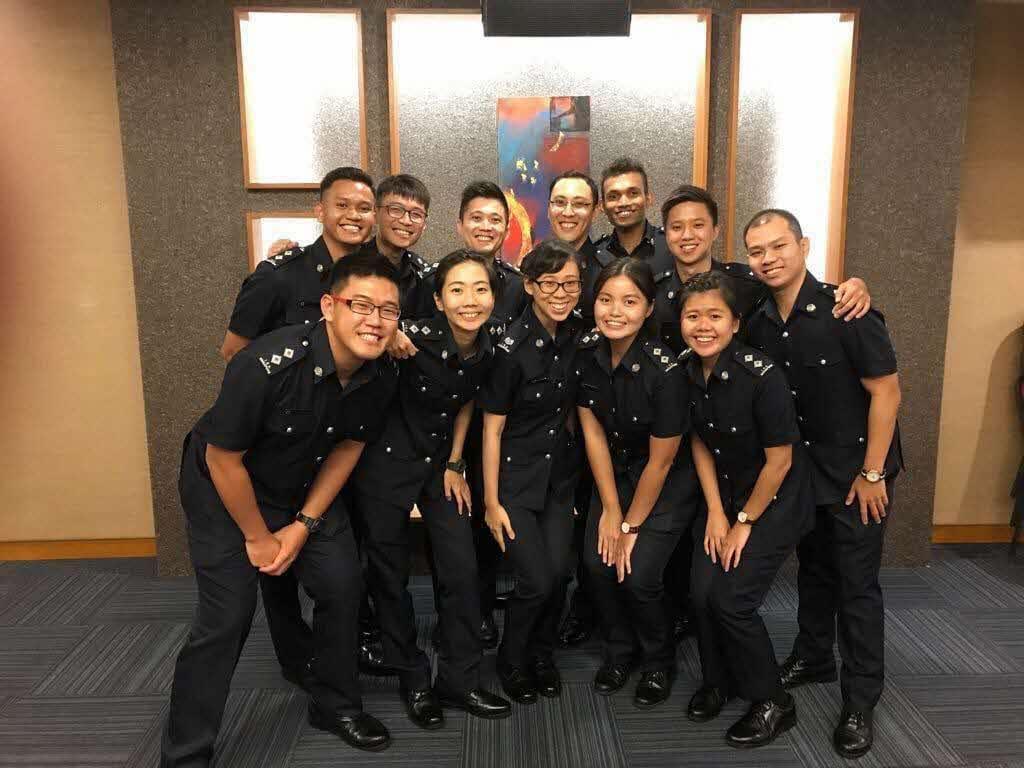 Lin with her ICA Inspector's course batchmates in 2016. Photo courtesy of Valerie Lin.
Lin with her ICA Inspector's course batchmates in 2016. Photo courtesy of Valerie Lin.
Lin’s ICA career far exceeded what she first signed up for.
She was excited to contribute to the security of the country as a frontline officer, and the opportunities to make an impact in other roles came as a surprise to her.
Finding time for family and herself
Although border security is a 24-hour affair, ICA’s work-life balance arrangement allows Lin to spend time on things that are important to her, such as her two-year-old daughter.
Lin and her family would typically be out on weekends on different adventures around Singapore, or even on short getaways overseas.
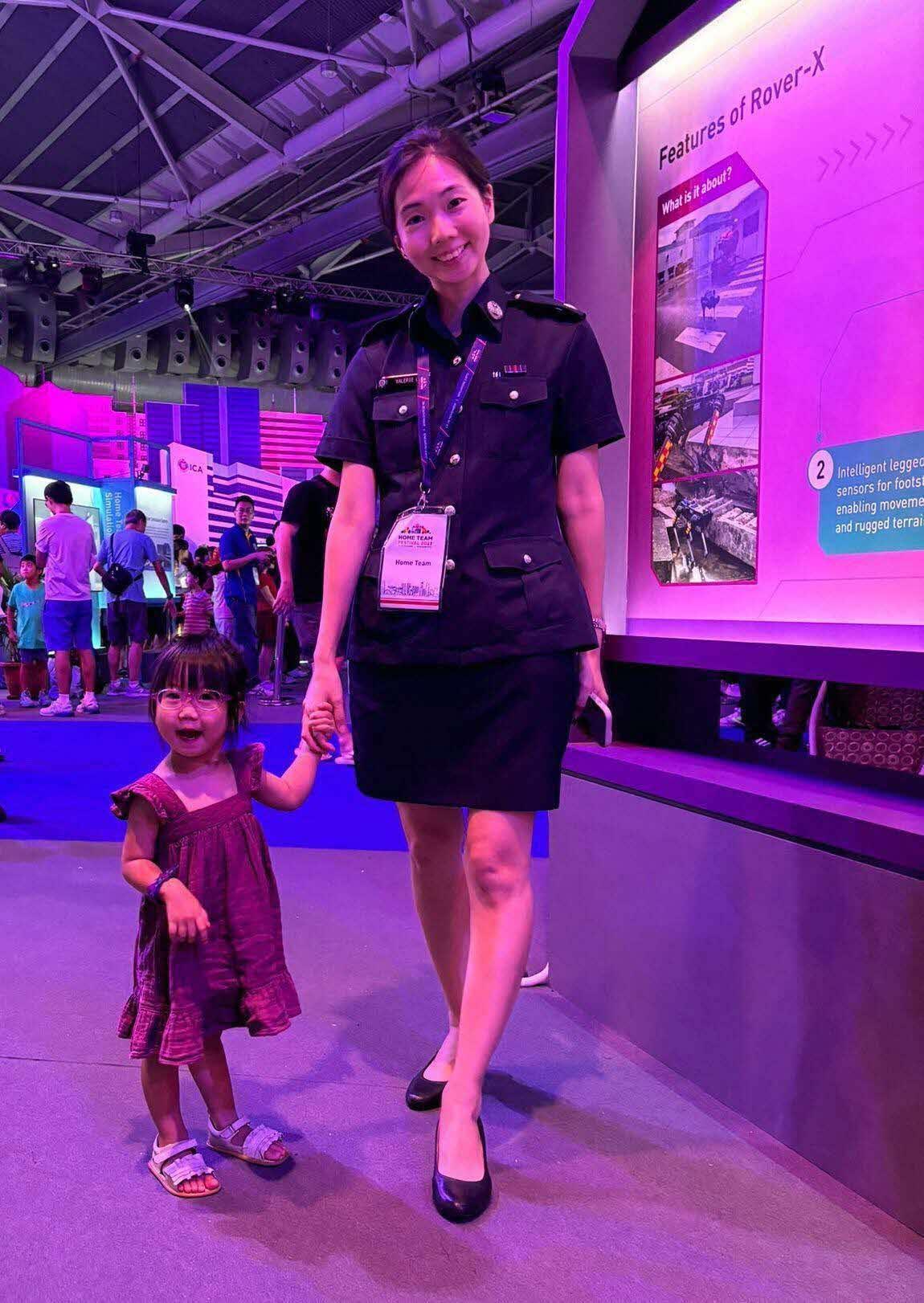 Lin and her daughter at the Home Team Festival 2023. Photo courtesy of Valerie Lin.
Lin and her daughter at the Home Team Festival 2023. Photo courtesy of Valerie Lin.
Apart from family time, Lin gets to enjoy some me-time outside of work.
This would typically involve attending barre classes, catching up on medical or detective dramas, reading her favourite Asian magical realism literature or a good whodunit novel.
Don’t forget your passports
If a simple desk-bound job doesn’t quite cut it for you and you are looking for a career in an ever-changing work environment, join the likes of Lin at ICA.
Who knows, you might get the chance like Lin did to make the immigration clearance process more efficient.
For those looking for pro-tips on how to cross the Singapore-Malaysia land borders in the speediest manner, here is Lin’s simple advice: “Use QR code for car travels, and always bring along your passports!”
This sponsored article made the writer want to go to JB.
Top image courtesy of Valerie Lin, via ICA / Facebook
If you like what you read, follow us on Facebook, Instagram, Twitter and Telegram to get the latest updates.

